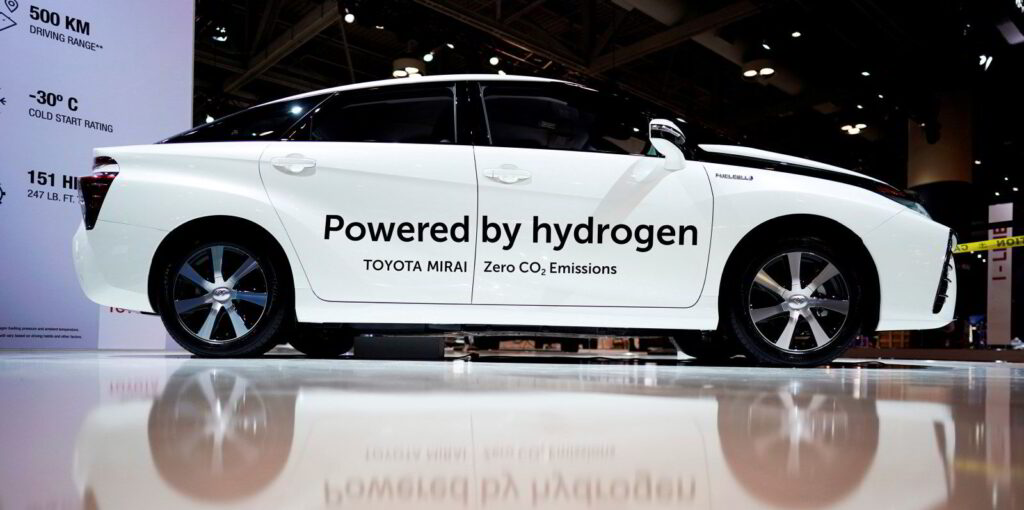Although there is widespread domestic anticipation that hydrogen-powered automobiles will accelerate decarbonization, Japanese automakers are placing their bets on trucks to lead the way for this technology.
On December 22, a 12-meter-long heavy truck with the letters “H2” painted on its sides began testing on Tokyo’s roadways. The truck, which was co-developed by Honda Motor and Isuzu Motors, runs on fuel cells, which use airborne hydrogen and oxygen to produce energy to move the wheels.
Crucially, they don’t release carbon.
The vehicle has a 56 kg hydrogen capacity and an 800 km range on a single charge. The automakers have until September to assess the truck’s usability, including how effectively it manages cargo and how simple or challenging refueling is. The target year for sales is 2027.
An additional objective of the government is to have 5,000 large fuel cell vehicles operational by 2030.
In actuality, Honda and Isuzu lost by a few months. The first of these experimental vehicles to begin demo-running was a fuel cell truck that Toyota Motor and its subsidiary Hino developed together in May.
Heavy trucks, which need to have plenty of cargo room and be able to travel great distances between fuel stops, may be able to become carbon neutral with the help of hydrogen fuel cell technology. Fuel cells are a more environmentally friendly solution than batteries in terms of storage capacity, and filling hydrogen tanks is faster than charging batteries.
As the industry leaders in hydrogen technology for automobiles, Toyota and Honda also anticipate that they will set the standard for hydrogen-powered vehicles once big fuel cell trucks begin to appear on American roads in significant numbers.
Originally unveiled in 2014 as the first mass-produced hydrogen-powered vehicle worldwide, Toyota’s Mirai has not exactly been a commercial success. In 2022, 3,200 units were sold worldwide. According to a September study by the International Energy Agency, Honda’s sole fuel cell model, the Clarity, which was introduced in 2016, sold about 200 units even though manufacture was stopped in 2021.
With 10,000 units sold, South Korean rival Hyundai Motor’s Nexo fuel cell model, which was originally introduced in 2018, became the best-selling fuel cell vehicle globally in 2022 thanks to strong local sales and government support.
According to data from the government, Japan had 7,600 hydrogen-powered passenger cars in 2022, making it the third-largest fleet in the world. With 29,300 of these vehicles on its roads, South Korea ranked first, followed by the United States with 15,000.
As a result of its major emphasis on passenger vehicles, Japan has been sluggish to adopt hydrogen in large vehicles, according to Kenichi Hamada, principal at Arthur D. Little Japan consultancy.
According to Gregory Trencher, an associate professor of energy studies at Kyoto University, Toyota and Honda saw the domestic [passenger vehicle] market as a means of driving down prices and truly increasing the size of manufacturing in terms of unit numbers. However, he claimed that the lack of traction for the Mirai had “shaken up” this plan.
According to Japan’s hydrogen strategy, which was revised in June from the original 2017 blueprint, the country will now prioritize supporting commercial vehicles in addition to passenger cars, since they are anticipated to have a greater need for hydrogen and be better able to showcase the benefits of fuel cell vehicles.
However, there is currently a bottleneck for FCVs due to a scarcity of hydrogen refueling facilities. 161 of these stations were in operation as of December 7, largely in cities and beside roads, according to the Next Generation Vehicle Promotion Centre, based in Tokyo. There is only one hydrogen station in several prefectures.
Although Hamada claims there was no use for the stations due to lack of demand, government subsidies played a part in persuading operators to develop them. Eventually, the persuasiveness of the subsidies was undermined by this reality.
Since commercial trucks typically have predetermined routes, building stations for them would be easier to handle.
President Koji Sato of Toyota views hydrogen as a “promising technology” because it gives society another option as it works towards being carbon neutral. The business started selling a fuel-cell version of its high-end Crown sedan in November.
When the new Crown was unveiled in October at the largest car exhibition in Japan, a Toyota engineer told Nikkei Asia: In comparison to passenger vehicles, trucks typically drive longer and spend less time idle. A truck that services convenience stores uses as much hydrogen as approximately 40 Mirai cars. Truck demand would support the companies of station operators.
In the meantime, Honda is getting ready to introduce a new fuel cell vehicle in North America and Japan in 2024. To promote an auto market that is favorable to hydrogen cars, it will be as vital to remove other obstacles, such as the high costs of the vehicles themselves and the hydrogen that fuels them.
